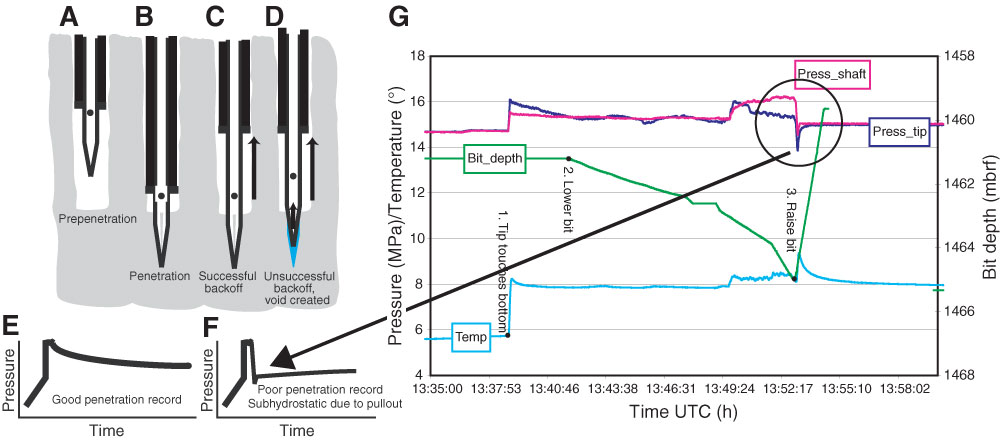
Figure F23. Schematic showing typical deployment of T2P and SET-P penetration probes. A, B. Drill string pushes probe into formation. C. Successful deployment in which probe stays in ground and bottom-hole assembly slides upward as drill string is raised. D. Unsuccessful deployment in which partial coupling occurs between drill string and Colleted Delivery System, partially pulling tool out of hole. E. Good penetration record characterized by abrupt increase in pressure, followed by slow dissipation of pressure while tool is left in ground. F. Poor penetration record characterized by sharp drop in pore pressure during pullout, resulting in subhydrostatic pressure that gradually builds back to formation pressure. G. Pressure and temperature response during an unsuccessful deployment. When the drill string is raised (bit depth decreases), pore pressures drop abruptly and temperature rises because the probe is being pulled out of the formation. UTC = Universal Time Coordinated.

Previous | Close | Next | Top of page